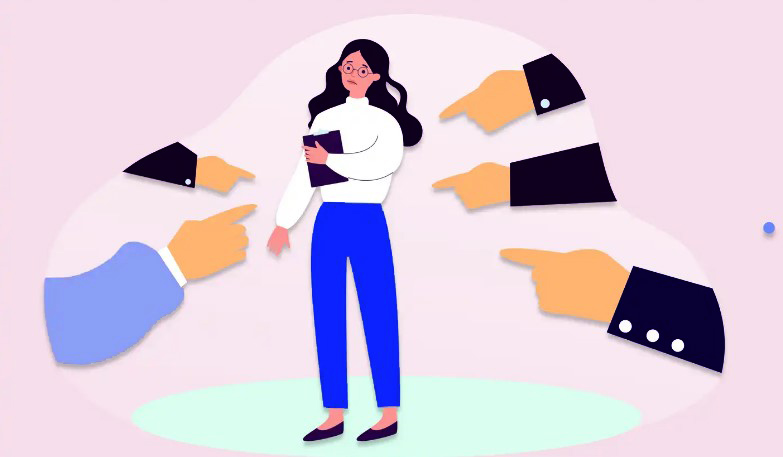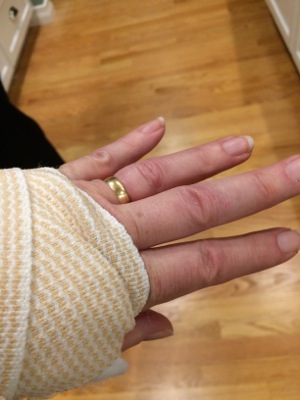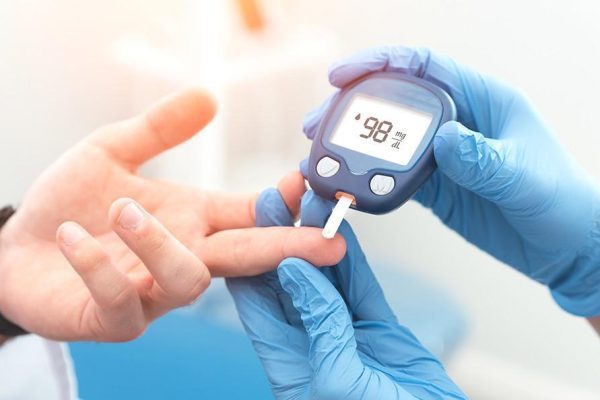What are the symptoms of social anxiety disorder? In a few words, Social Anxiety Disorder (SAD) is characterized by excessive fear of one or more social situations.
The feared situations are either situation of social interaction:
- to be in public,
- eating in public,
- to disagree with someone,
- talk to a person embodying authority
- either performance situations:
- Make a speech,
- job interview,
- speaking in public
Formal interactions are more distressing than informal situations.
The person fears being the object of the attention of others, of evaluated and misjudged. She is also afraid that you will notice her discomfort (for example, when blushing) and be the object of mockery.
Symptoms of social anxiety disorder
There is a cultural variant of social anxiety especially in Japan and Korea. It calls Taijin Kyofusho of being afraid of embarrassing someone else rather than embarrassing yourself.
People with SAD avoid confront with these situations as much as possible. Which causes them intense anxiety.
The following physiological symptoms can manifest this anxiety:
- dry throat,
- sweat,
- tremors (hands, legs, voice),
- palpitations,
- feeling of suffocation
- blushing,
- muscle tension,
- chest pain,
- sensations of hot or cold,
- stammering / stammering,
- m the head
- Panic attack.
CBT has the best efficacy rates among the psychological treatments studied, which meet international research criteria. It gives results of efficacy equivalent to pharmacotherapy but with fewer side effects and greater long-term efficacy. CBT recommends as a first-line treatment in many countries.
Prevalence of symptoms of social anxiety
According to the DSM-5, the lifetime prevalence for the general population is 3% to 13%.
More generally, including people suffering from shyness without, however fulfilling all the SAD criteria, approximately 20% of the general population would be concerned!
SAD affects approximately two women for one man.
Beginning of the disorder and evolution
Social anxiety disorders often begin in adolescence. It is between 11 and 15 years, its course going chronic if not you don’t take care of.
Comorbidity
Between 50% and 80% of those who suffer from SAD simultaneously present at least one other psychiatric pathology.
50% to 54% have another anxiety disorder;
41% to 56% experience a depressive episode.
Drug addiction is also a frequent consequence. And complication often used to disinhibit itself and as an anxiolytic.
Predisposing factors of symptoms of social anxiety
Certain factors linked to a genetic vulnerability, involving several genes, including the serotonin transporter gene. This vulnerability exposes people to emotional disturbances in general and not specifically to SAD.
A neuroticism high that tends to experience negative emotions and have high reactivity to stress is a common factor of vulnerability to emotional disorders. The risks of such disorders increase if combined with low extraversion.
Diagnostic symptom of social anxiety
Definition according to ICD-10
Social phobias
Fear of being stared at by other people, leading to avoidance of social interaction situations. Invasive social phobias are usually accompanied by a loss of self-esteem and a fear of being criticized. Social phobias can manifest as flushing, trembling hands, nausea. Or an urgent need to urinate, with the patient sometimes being convinced that one or more of these secondary manifestations is the primary problem. Symptoms can progress to panic attacks.
Social neurosis
We no longer distinguish a type of ” generalized social anxiety, “which referred to a disorder beginning earlier, greater chronicity, more systematic avoidance, more significant handicap, and greater risk of suicide.
We now distinguish a subtype ” performance anxiety only ” where fear is not present in simple social interaction, but only in performance situations such as eating or drinking in public, attending meetings, giving presentations. Research indicates this subtype is rarer.
Shyness, Social Anxiety Disorder, and Avoidance Personality
The term “Social Anxiety” covers three types of anxiety related to social situations: shyness, social anxiety disorder, and avoidant personality.
These three types are often placed on a continuum depending on the intensity of the anxiety felt:
About 40% of people in the regular population report having been shy at certain times in their life, which makes shyness an everyday experience.
Differential diagnoses: Symptom of social anxiety
Differential with panic disorder
Negative cognitions in social anxiety disorder are mainly oriented towards the fear of a negative evaluation of the person. A person with Panic Disorder as the primary diagnosis will rather have catastrophic thoughts concerning the somaticsymptoms (tachycardia in particular). In panic disorder, the trigger stimuli will not be just elements of social interaction or performance situations.
Differential with agoraphobia
The function of avoidance in agoraphobia is to limit the fear and reoccurrence of a panic attack. While in social anxiety disorder, it is to avoid the possibility of negative feedback.
Differential with Obsession of Body Dysmorphia (CDO)
Although in both disorders, there is an obsession with a negative appraisal based on appearance. Cognitions in ODC are instead focused on the idea of rejection based on the exaggerated perception of a physical defect. In SAD, people have a fear of rejection instead based on the perception of their supposed poor skills in social interactions, which may include certain aspects of their physical appearance.
Differential with avoidant personality disorder
Individuals with an avoidant personality disorder will have much more disabling, more chronic social anxiety, and often comorbidities (depression, substance abuse, etc.).
The central negative beliefs will be around the idea of being inadequate, unlovable, inferior and that other people think of themselves as superior and are judgmental, even hostile.
These people may benefit from therapy to manage social anxiety, but it will take longer to achieve results comparable to people with SAD.
SAD and joint depression
Like SAD, depression is often associated with social withdrawal, decreased activity, low self-esteem, and meditating on social interactions related to negative perceptions of self and others. It appears more common for SAD to precede depression than vice versa, suggesting that social withdrawal and the associated decrease in positive reinforcement may lead to depression.
The history will show whether the patient remembers previous social anxiety or not. If he does not remember social anxiety between two episodes of depression. It may indicate the depression as being primary and that once treated, SAD may go away. In most cases. It is recommended to start with the management of depression unless the functional analysis suggests the opposite.
Pathology models
The Clark and Wells Model (1995)
Clark and Wells describe different factors that maintain SAD despite exposure to social situations. The processes at work before and after these exposures reinforce negative beliefs and, therefore, vulnerability to future social situations.
People with SAD develop dysfunctional beliefs about themselves and others which can categorize into three categories:
- excessively high standards of social performance (for example, Blushing is a sign of weakness, and I must not show any sign of weakness or anxiety);
- of conditional beliefs about the negative consequences of certain behaviors (e.g., IF I express my personal opinion, THEN I will be rejected);
- the unconditional beliefs negative self (e.g., I am unworthy of love, I am inadequate as a person).
These beliefs cause the person to anticipate a social threat due to an expected failure to meet social demands. It will interpret the ambiguous elements of social situations negatively in a sense congruent with beliefs. For example, yawning of fatigue from the interlocutor will be interpreted as if the person was bored, laughter at the back of the room as if people were making fun (personalization bias).
This model also identifies several factors that prevent social exposure from overturning these dysfunctional beliefs:
Self-focused attention
People in social situations focus exceptionally on physiological symptoms, their anxiety, and their performance. The individual uses his internal perceptions to construct a representation of how he imagines being perceived by others. As the pre-existing self-image is negative and the perception of anxiety heightened, the person infers that they are perceived negatively.
The person is convinced that his anxiety is perceived very strongly by others (emotional reasoning bias), which is interpreted as a failure to reach social standards considered normal (although high). Finally, the individual, therefore, expects to be judged negatively.
Hyper-centration on oneself can also reduce the individual’s ability to concentrate on the conversation effectively. And on the social signals of the partners. Which would allow them to interact in a relevant way, perception of emotions turns of speech, understanding of the topic.
That focused attention on oneself (rather than on the task). Also hinders the perception of neutral or positive feedback from interlocutors.
A lack of positive feedback will also be interpreted as proof of failure. These memories of failure will then fuel the person’s overall negative perception.
Safety behaviors
Safety behaviors are subtle avoidances used in the hope of preventing pessimistic predictions from coming true.
Examples of safety behaviors:
- do not contribute to conversations;
- not or little to look in the eyes;
- plan what to say;
- taking alcohol or other drugs;
- put on makeup to hide the blush;
- put on anti-perspiration protection;
- wear discreet clothes;
- position yourself so that you can get out quickly (near an exit, at the end of the row, near the toilets, etc.).
On the one hand, Clark and Wells suggest that these avoidances produce negative reinforcement by decreasing anxiety and increasing feelings of control.
On the other hand, when the social situation is going rather well. The individual attributes success to his safety behavior. For example, if the person does not reveal any personal information during the conversation. And it accepted, she may think it is discretion that it went well. Dysfunctional beliefs maintain, whereas if the person had revealed himself. And that it gone well, that could have attenuated the belief.
Negative anticipation
People with SAD sometimes anticipate social interactions far in advance. This anxious anticipation serves as a trigger. So people become self-centered and stressed before entering the situation. This anticipation also induces a lot of avoidance.
Examples of Automatic Negative Anticipation Thoughts: I won’t know what to say. People will think I’m stupid; I’ll blush, I’ll be ridiculous, I’ll shake or stutter. People will see my discomfort and think I’m weird.
Post-mortem examination
It is common for the person to rethink their performance in a very negative way after the fact. And for this to fuel repetitive negative thoughts (ruminations). That will fuel an overall negative judgment I am unable to socialize. I am not attractive, leading to a drop in the person’s self-esteem and increasing their desire to avoid these situations. That thus contributes to the maintenance of the disorder.
FAQ on Symptoms of social anxiety
-
What is anxiety, and how can I control it?
Generalized anxiety disorder (GAD) is a mental condition. In which you often worried or anxious about many different situations. Your anxiety can seem out of control and get in the way of your daily activities. However, proper treatment can often improve GAD.
-
What to ask a person with anxiety problems?
Express your concern for the person when they stop going places or doing things they used to do, for example. Ask him why and if he wants to share it with you. If you see that the conversation revolves around anxiety, you can ask if he needs help to deal with it.
-
What can be taken for nerves and anxiety?
Suppose you feel nervous, confused, anxious, etc. Its prolonged intake helps you feel good. Nature is very wise and contains many substances that calm us and make us feel better. That is why we recommend you make infusions of linden, valerian, kava, licorice, passionflower, or chamomile.
-
How does anxiety influence eating?
People who suffer from social anxiety tends to eat long hours and especially foods with high-calorie content. It is because, for these people, food works as an anxiolytic; it calms them down. However, the downside is that it can lead to potential nutritional imbalances and even obesity.
-
What lack of vitamin causes anxiety?
It tends to happen to people who suffer from chronic stress or anxiety. In addition to lowering the immune system’s defenses. Thus, being more prone to colds. Or infections, stress is behind the lack of vitamin B. Which performs essential functions in the body.
Conclusion on Symptoms of social anxiety disorder
If the person does not speak to reveal themselves. The other person may imagine that they are not interested in social interaction. And abruptly leave the conversation. Another example: if the individual drinks to disinhibit himself. His behavior can become inappropriate.
Overall, these security behaviors will inhibit the person’s natural social interaction skills. However, the skills that appear more clearly in the reassuring context of the psychologist’s office.





